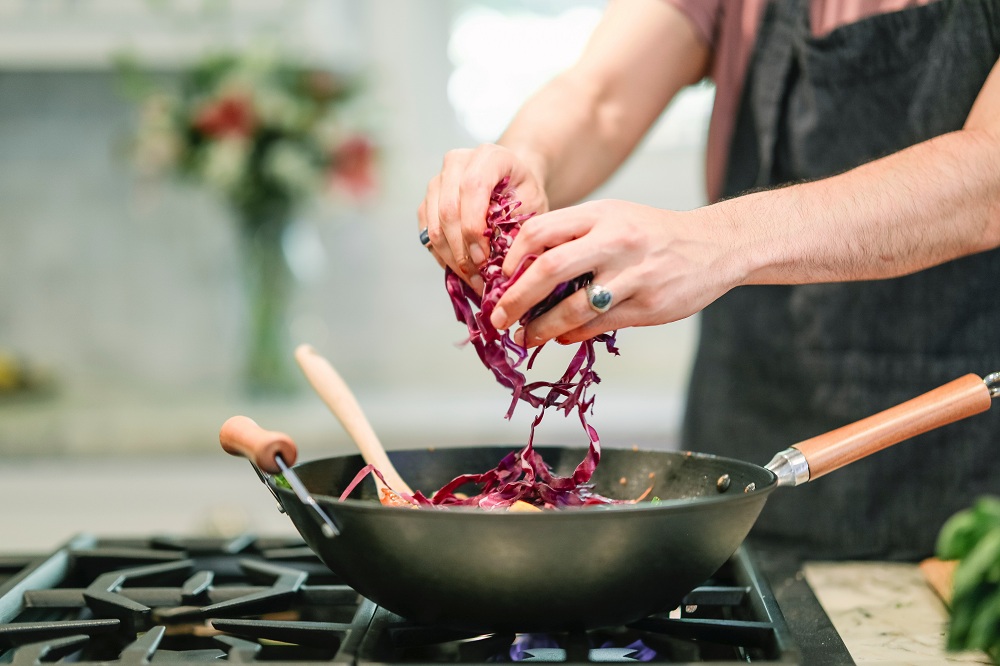Many people who start cooking at home have this grand idea in their heads of preparing feasts that would rival their favorite restaurant. And while that’s respectable, many home cooks must first master the basics.
Salt in Every Stage of the Cooking Process
A common mistake that many home chefs make is not adding enough salt, and not adding it in every stage of the cooking process. Often, home chefs will sprinkle just a tiny bit of salt at the end of the cooking process. This usually means that the resulting dish will either be dry, bland, or both.
Seasoning your dish with a good amount of salt to taste is the best way to avoid this. From sautéing and frying to boiling and stewing, salting every step of the way helps you infuse as much flavor into your dish as possible. In doing so, you’ll ensure that your final product will be as delicious as the ones they make in restaurants.
This is because each ingredient brings a different flavor in different parts of the cooking process. By salting all throughout, you are maximizing every flavor that each ingredient adds to the dish.
Salt also draws out moisture from ingredients. This means that the flavor of each ingredient is concentrated, thus maximizing their taste. You also ensure that these flavors penetrate all levels of the food, not just the exterior.
Dry vs. Fresh Herbs
 When a recipe calls for the use of herbs, it’s always best to ask the question: dry or fresh? Dry herbs and fresh herbs, despite being the same plant, actually benefit from different methods of cooking.
When a recipe calls for the use of herbs, it’s always best to ask the question: dry or fresh? Dry herbs and fresh herbs, despite being the same plant, actually benefit from different methods of cooking.
Dried herbs are usually best when they’re added early in the cooking process. This is because it gives time to infuse the whole dish with their flavor. Adding dried herbs at the end of the cooking process can give your dish a dry and dusty taste. Dried herbs work well when added to the beginning of soups and stews before the main cooking liquid is added. NOTE: If you can’t smell the dried herb when you open the jar, it usually means it has gone stale. Throw it away immediately!
Fresh herbs, on the other hand, are often best used at the end of the cooking process so as to maintain their bright flavor, strong fragrance, and vibrant color. When fresh herbs are cooked for long periods of time, their flavors leech out and disappear into the dish, rendering them useless. Instead, use fresh herbs as a finishing touch to dishes like soups, pastas, and sandwiches.
Given that, some herbs work better dried than fresh. Usually, woody herbs like rosmary, oregano, or thyme dry out without losing any of their flavor. Meanwhile, soft herbs like chives or basil tend to lose a lot of flavor once they start drying out.
“Sealing” Your Meat? The Maillard Reaction
 You’ve heard a lot of professional chefs talk about “sealing” your meat, but this is actually kind of a misunderstanding of a cooking phenomenon called the Maillard Reaction.
You’ve heard a lot of professional chefs talk about “sealing” your meat, but this is actually kind of a misunderstanding of a cooking phenomenon called the Maillard Reaction.
The Maillard Reaction is the chemical reaction that gives browned meat its distinct flavor. When amino acids and sugars are heated through, they give off an abundant amount of flavor and aroma molecules. It was discovered in 1912 by French chemist Louis-Camille Maillard and has been used in the world of cooking ever since.
But does it actually “seal” the meat? For almost a century, many chefs believed that the browning of meat “sealed” in most of the flavor, which is why they encouraged browning meats and vegetables as often as possible.
While the result is the same (more browning = more flavor), this misunderstanding of the Maillard Reaction has led to some confusion. First, browning meat does NOT seal in flavor. The flavor of browned meat comes from the browning itself, which is where most of the Maillard reaction occurs.
What about the juiciness of well-browned meat? Doesn’t that mean that it’s been sealed inside? Actually, no. The “juices” from meats are actually a combination of proteins, flavor molecules, and moisture. These juices naturally seep out of the meat during cooking, which is why meat sizzles on a hot pan. However, when meat is rested properly, the meat gradually reabsorbs the proteins and the molecules, leading to juicy, flavorful meats.
So what does this mean for home chefs? Well for starters, whenever your cooking any piece of meat, whether for stews or to serve as a grilled piece, browning is your friend.
But that’s not just limited to meats: vegetables also benefit from the Maillard reaction. Notice how browning vegetables in your pan before pouring in your cooking liquid results in a much deeper, more flavorful broth. And those browned bits stuck to the bottom of the pan? That’s not burnt bits, that’s what chefs call a “fond” and is the base of any great sauce.
Balance in All Things
 It’s happened to everyone: you use too much of a particular spice or herb and the flavor profile of your entire dish is ruined. It’s a common mistake that some professionals can make from time to time. Luckily, there’s always a fix.
It’s happened to everyone: you use too much of a particular spice or herb and the flavor profile of your entire dish is ruined. It’s a common mistake that some professionals can make from time to time. Luckily, there’s always a fix.
When it comes to balancing flavors, it’s good to remember the basics.
Remember that, in cooking, there are 5 essential tastes: sweet, salty, bitter, sour, and umami. The first four are easy to understand, whilst umami can be a bit confusing for some. Umami, in essence, is the combination of all flavors (although, some would argue that it lies in the salty spectrum), the savory taste of a dish.
Learning how to balance dishes is both an art and a science, and is something that Asian cooks have mastered in their cuisine. This is why Asian dishes will always have a component of each taste. Balancing it so that no one flavor takes over, however, can be tricky and can take a lifetime to master. Once you do learn how to balance flavors, you’ll find that you can cook any kind of dish. At home, though, balancing flavors can mean simply adjusting your spices so that your dish doesn’t becoming overpowering.
Each taste profile can either complement another, or negate it completely. For example, sweetness is generally balanced by spiciness. This is why Thai curries always have a sweetener like sugar to mellow out the spiciness of peppers. However, taste profiles can also enhance one another: this is why salted caramel works so well. The salt acts as an amplifier for the sugars in the caramel, leading to a richer, denser flavor.
It doesn’t take much to be a great home chef, just remember the basics of cooking and you’ll soon be making dishes that will wow your family and friends. Do you have cooking tips and tricks that we should know about? Comment below!



